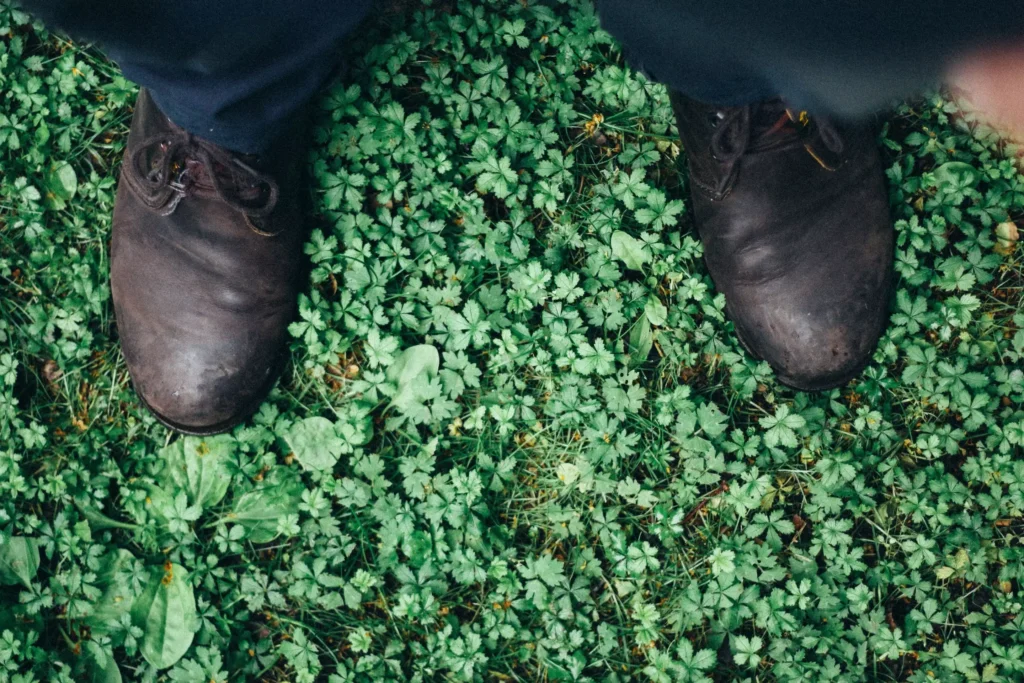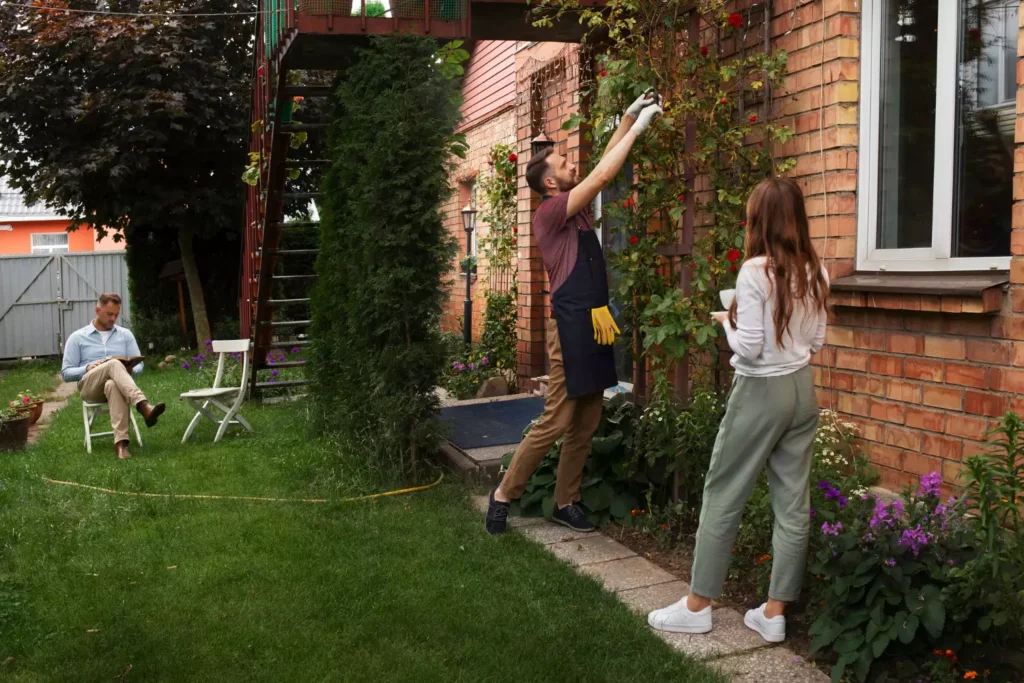The tools of gardening are diverse, and many gardeners may not know the differences between a grub hoe and an adze. Both of these tools can be used for similar purposes, yet there are distinct differences in their construction and use.
An adze is primarily used for excavation purposes, while a grub hoe is more suitable for soil preparation. Each tool has its own unique design that allows it to perform its intended function with greater efficiency than the other tool.
By understanding the characteristics of each tool, gardeners can choose the right tool for their particular needs.
Definition Of A Grub Hoe
A grub hoe is a garden tool used for clearing soil and debris, as well as for creating planting rows. It’s estimated that around 70% of gardeners own a grub hoe, making it one of the most popular tools in garden maintenance.
This tool is designed with a wide, curved blade that is sharpened on one end and attached to a long handle. The blade is used to slice through soil and weeds quickly and efficiently.
Grubbing is an effective technique used to clear soil, remove rocks and other debris, or create planting rows. The grub hoe’s sharp blade makes it an ideal tool for this purpose; it easily cuts through small roots and weeds with minimal effort. The wide curved shape of the head also allows for greater surface area coverage when slicing through the ground.
Regular hoe maintenance is important to ensure the longevity of the tool. To keep the blade from rusting, wipe it down after each use with a cloth dipped in oil or lubricant oil. If there are any nicks or dents on the blade, sharpen them with a file or stone to make sure they’re still cutting efficiently.
Definition Of An Adze
An adze is a tool used for shaping wood by removing small chips from the surface. It consists of a metal head attached to a handle, and has a curved blade at an angle to the handle.
Adzes are traditionally used in woodworking and carpentry, but are also popular in gardening and landscaping. The adze differs from the grub hoe in that it has a curved blade instead of the straight blade found on the grub hoe.
This design allows for greater control over the removal of smaller chips, making it more suitable for detailed carving or forming grooves and other shapes in wood. Furthermore, its curved shape makes it easier to reach into tight corners and crevices than a straight-bladed tool like a grub hoe.
Safety considerations should be taken into account when using an adze. The sharp edge of the adze’s blade can cause serious injuries if handled improperly. When not in use, it is important to store it safely out of reach of children or pets.
Sharpening techniques should also be employed regularly to ensure that the blade remains sharp enough for efficient cutting without becoming dull and dangerous.
Design Of A Grub Hoe
The grub hoe and adze are two essential garden tools which have been used for centuries. Despite their similarity in appearance, these two pieces of equipment have marked differences that distinguish them from one another.
The design of a grub hoe is distinct from an adze in several ways. The shaft length on a grub hoe is significantly shorter than that of an adze, and the handle shape is also noticeably different. The handle of a grub hoe is typically rounded and short, while the handle of an adze is long and straight. Additionally, the blade on a grub hoe is wide and flat, while the blade on an adze is curved and thin.
These unique design elements enable each tool to function efficiently for its intended task. The shorter shaft length and rounder handle shape of a grub hoe make it ideal for close-up precision work when cultivating soil around plants or weeding beds.
The longer shaft length and straighter handle on an adze enables it to be used with more power to break up hardened soil or chop through roots during landscaping projects.
Design Of An Adze
The design of an adze is quite different from that of a grub hoe. An adze is a tool used for shaping wood, and it has a blade that is sharpened at an angle perpendicular to the handle. This allows for efficient woodworking as the blade can be easily and accurately directed in any direction.
The blade composition of most adzes consists of hardened steel, while some are also made with stone, bone or antler tips. An adze’s handle also differs from that of a grub hoe and it typically features a curved shaft with a grip at the bottom and an eyelet near the top. This allows for better control when working with wooden material, ensuring precision results.
The traditional sharpening techniques used on adzes involve grinding the blade along its length to create a beveled edge. This process requires skill and patience as well as specialized tools such as files, stones and honing rods. The overall design of an adze makes it ideal for shaping wood efficiently and accurately without much effort or risk of injury or damage to the material being worked on.
Its greater degree of control combined with its durable build ensures quality results every time, making it an essential tool for any woodworking project.
Uses Of A Grub Hoe
Grub hoes and adzes are two tools that are often used in gardening. While they can both be used to cultivate soil, they have different uses and applications.
According to the American Society of Agricultural and Biological Engineers, grub hoes are the most popular tool used by gardeners in North America with over 59% of all gardeners having at least one grub hoe in their collection.
A grub hoe is a tool that has a short handle and blade that is typically shaped like a triangle or half moon. The blade is sharpened on one side and has an angled tip which helps it penetrate the soil more easily. It is commonly used for weeding, loosening compacted soil, cultivating rows, and edging beds. This makes it an ideal tool for preparing gardens for planting as well as maintaining them throughout the growing season.
The adze is another gardening tool that can be used for similar purposes but has some key differences from a grub hoe. An adze has a longer handle made of wood or metal that usually comes with a curved blade attached to it. This type of tool is primarily used for breaking up hard soils or digging deeper than what can be achieved with a grub hoe. Adzes can also be used to create shape beds or borders due to its curved blade design which gives it more control when shaping the soil than what can be achieved with a grub hoe.
Both tools offer excellent performance when working in different types of soil and have their own set of specific uses depending on the gardening application required. Here are some key features of each:
-
Grub Hoes: Good for weeding, loosening compacted soils, cultivating rows, edging beds
-
Adzes: Ideal for breaking up hard soils, digging deeper into the ground, creating shapes and borders with its curved blade design
Uses Of An Adze
Adzes are tools that have been used for centuries in woodworking and gardening. They are most commonly used for removing bark and shaping wood, but can also be used for digging, planting, and weeding in the garden.
Adzes differ from grub hoes in that they have a blade that is perpendicular to the handle, while grub hoes have a blade that is parallel to the handle. The adze is better suited for removing bark, while the grub hoe is better suited for digging and planting.
Woodworking
The use of an adze and grub hoe in woodworking are both incredibly useful tools that have been used for centuries by artisans and craftsman.
An adze is a tool with a blunt or curved blade set at right angles to a handle, used for trimming and smoothing wood. It can also be used to shape wooden bowls, carve wooden sculptures and even hollow out logs.
When using an adze, it is important to choose the appropriate blade based on the type of wood being worked with; blades come in various sizes and shapes such as straight or curved blades, depending on the job. It is also important to ensure the blade is properly sharpened prior to use; common sharpen techniques include whetstones, diamond stones or power grinders.
Adzes can be used on a variety of softwoods, hardwoods and even bamboo, making it suitable for many different types of projects.
A grub hoe is similar in shape to an adze but typically features a thinner blade and is used mainly for digging and cutting into hard soil or roots.
Grub hoes are generally only suited for digging into hard soil or roots; their thin blades make them less effective for carving or smoothing out wooden surfaces as they lack durability compared to adzes.
Grub hoes should also be sharpened regularly as their blades will quickly become dull when working with harder materials such as soil or rock.
Overall, both adzes and grub hoes are invaluable tools when it comes to woodworking projects – each having their own unique uses depending on what material needs to be worked with.
Gardening
Gardening is often a necessary part of life, and the use of an adze can greatly benefit both novice and experienced gardeners alike.
An adze can be used to prepare the soil for planting by breaking up hard soil into smaller, more manageable pieces. This technique can also be used to remove larger roots that may have grown in the area which could otherwise inhibit plant growth. Additionally, an adze can be used to help with precision planting techniques such as creating furrows or trenches for sowing seeds.
The use of an adze is also advantageous when planting trees or shrubs; it can be used to dig a hole wide enough for the root ball and then used to loosen the soil around the roots after being planted so that it has a better chance at taking root. Furthermore, an adze can be used to shape beds or pathways in order to create a more aesthetically pleasing garden space.
Overall, an adze is a versatile tool that can make gardening easier and more efficient by helping with soil preparation, removing unwanted roots and aiding in planting techniques.
Its sharp blade makes it ideal for breaking up hard soil as well as digging precise holes for planting trees or shrubs. Ultimately, an adze is a must-have tool for any gardener looking to create a beautiful outdoor space.
Choosing The Right Tool For Your Needs
Adzes and grub hoes are tools used for soil preparation, but they have distinct differences that gardeners should be aware of when choosing the right tool for their needs.
An adze is a large tool with a long handle and wide blade, usually made of steel or iron. The blade is curved at the end and designed to cut through roots when clearing land for gardening.
Grub hoes have a small head attached to a short handle, making them easier to use in small spaces. Their blade is flatter than an adze and designed to break up and loosen soil without cutting through roots.
Because of its larger size, an adze can be used to prepare large plots of land quickly compared to a grub hoe. This makes it ideal for preparing long rows of soil or removing large rocks from the ground.
On the other hand, grub hoes are better suited for smaller areas due to their smaller size and ability to easily maneuver in tight spaces such as raised beds or around plants without damaging the root system. Additionally, because their blades are flatter than an adze, they can also be used for weeding by slicing weeds away from the soil surface without disturbing existing plants.
Gardening tips suggest that both adzes and grub hoes can be useful tools depending on the size of area being prepared and types of materials being removed from the soil. Adzes are great for larger plots where speed is important while grub hoes are perfect for small spaces where precision is more important than speed.
When choosing between these two tools, consider your gardening goals and select the one that best meets your needs for optimal results.
Conclusion
The choice between a grub hoe and an adze is a matter of personal preference and the specific task at hand.
In the garden, both tools can be used to great effect – though not always in the same way.
The grub hoe is designed for cultivating soil, removing weeds, and shaping beds; whereas an adze excels at cutting roots, digging trenches, and forming furrows.
Irony might suggest that these two seemingly disparate tools are actually quite complementary.
Together, they enable gardeners to make their plots more productive and aesthetically pleasing.
Therefore, when selecting the right tool for your gardening needs it is important to consider both a grub hoe and an adze.



